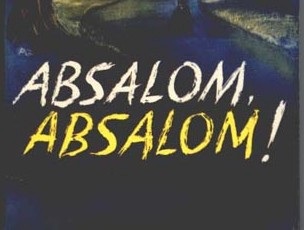“long still hot weary dead”

John Jeremiah Sullivan on Absalom, Absalom!
Even when he does tell you everything, you can’t entirely trust it. No surer sign exists of the book’s greatness than how it seems to reconfigure itself and assume a new dimension, once we feel we know it, and these shifting walls of ambiguity were designed by Faulkner himself. They allow the text a curious liquid quality, so that it can seem alive, as if it might be modified by recent history too. I found it fascinating to read the book with a president sitting in the White House who comes from a mixed-race marriage, and with the statistic having just been announced that for the first time in U.S. history, nonwhite births have surpassed white ones. Some of the myths out of which the novel weaves its upsetting dreams appear quite different, like walking by a familiar painting and finding that someone has altered it. This is a strange time to be alive in America, in that regard. Close one eye, and we can seem to be moving toward a one-race society; close the other and we seem as racially conflicted and stratified as ever. Racism is still our madness. The longer that remains the case, the more vital this book grows, for Faulkner is one of the great explorers of that madness.
If you’ve ever spent a fruitless day trying to find the tiny, somewhat-hidden plaque commemorating Quentin Compson on the Anderson Memorial Bridge (the location of his suicide in The Sound and the Fury), here it is.